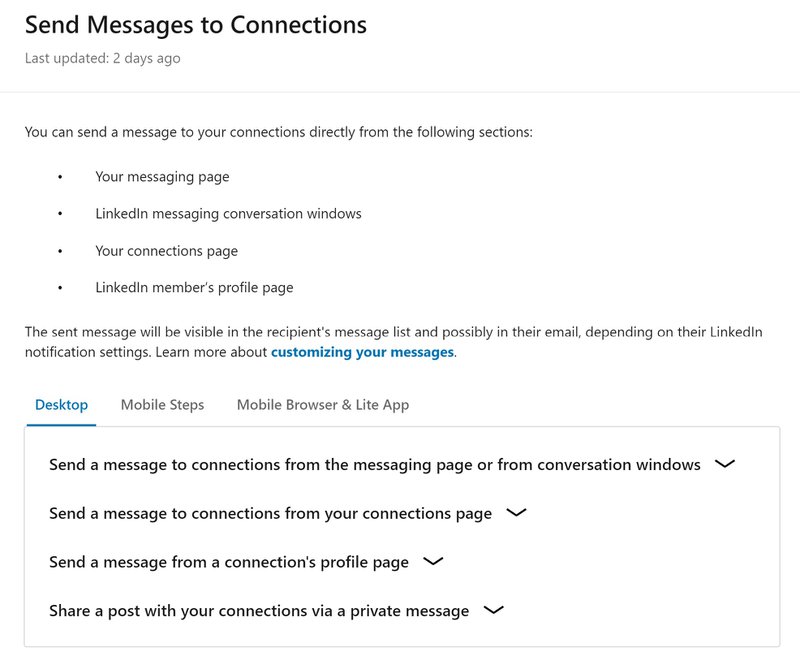Do you ever struggle to say “no” when someone asks you to do something? If so, you may benefit from learning about the Foot in The Door technique. This technique is often used to increase compliance and is based on the psychological principle of consistency. This article will explain the Foot in The Door technique and how to use it.
This article will explore and apply the foot-in-the-door technique using a simple and easy-to-use platform, LinkedIn. We will also provide some tips on how to implement it effectively. By the end of this article, you will better understand how the Foot in The Door technique works and be able to use it in your daily life. So, if you’re ready to learn more, let’s get started!
Table of Contents:
- How Was the Foot-In-The-Door Technique Created?
- What Is The Foot-In-The-Door Technique?
- What is the Foot In The Door Psychology Behind The Technique?
- The Foot-In-The-Door Technique Guide
- Why Does The Foot In The Door Technique Work
How Was the Foot-In-The-Door Technique Created?
The foot-in-the-door marketing technique was initially popularized by Johnathan Freedman and Scott Fraser in a 1966 study. The foundation of the study was based on the question, “how can an individual be persuaded to do something they would rather not do?”
Their experiment asked the resident for a small request via telephone and later asked for a more significant recommendation during the face-to-face meeting.
The small request, made via telephone, asked the study subjects to report the cleaning products they used to clean their home. After answering the question, the researcher asked the subjects to grant access to their homes to examine the product brands operated to clean the house.
What Is The Foot-In-The-Door Technique?
The physicology of the foot-in-the-door technique is simple, and once an individual agrees to a small request, they are more likely to agree to a more significant request. It implies that you cannot make a big request for a salesperson if the small request has been declined.

The Foot in the Door technique is a tried-and-true psychological strategy used by salespeople, negotiators, and marketers to increase compliance. It was first introduced in 1966 by psychologists Jonathan Freedman and Scott Fraser. The method is based on the psychological principle of consistency – the principle that people are more likely to comply with a request if they’ve already agreed to a small request in the past.
Start With A Small Request
The basic premise of the Foot in The Door technique is this: start by making a small request to the person you want to influence. Because the person has already agreed to the first request, they will then be more likely to agree to the more significant request. Once they agree to the small request, follow up with a more extensive proposal related to the first one.
The Foot in The Door technique is a great way to increase compliance with others. It can be used in many different situations and is a great way to convince someone to do something they may not have initially wanted. To succeed, it is vital to make sure that the first request is small enough that it is easy to agree to and then use that agreement to move forward and ask for the second, more substantial request.
Think of the traditional marketing technique where a salesperson would make a house call to sell a vacuum cleaner. Once the salesperson got their foot between the doorframe and your door, you couldn’t slam the door on their face and were inclined to listen to them.
While this marketing technique was successful to some extent, it was also highly intrusive and persuasive, and in most cases, the salesman paid little attention to the customer’s needs.
With changing customer needs and highly informed customers in today’s digital world, the traditional foot-in-the-door marketing technique might not be effective. However, the principles of this technique are still helpful, particularly in LinkedIn marketing strategy.
Examples
If you are trying to get someone to purchase a product from you, you may start by asking them to sign up for a free newsletter. Once they agree to sign up, you can ask them to purchase the product. The Foot in the Door technique effectively increases the chances of getting a “yes” to your requests.
Another example is if you are trying to get someone to donate to a charity, you could ask them to complete a survey. Once they have agreed to the study, it is more likely that they will also agree to donate money. This is because the survey is typically a small request that is easy to agree to, and this agreement creates a sense of consistency, making them more likely to agree to the more significant request.
Using the persuasive techniques of the foot-in-the-door salesman and combining them with your content strategy, you can design a marketing strategy that gets you in the door of your prospects and the inner circle of their companies and finally to their bank account to get you paid. Next, let’s see a simple guideline to follow.
What is the Foot In The Door Psychology Behind The Technique?
Marketers use foot-in-the-door psychology to increase consumer compliance. This technique involves first making a small request and then gradually increasing it. Doing this makes the consumer more likely to comply with the more significant request.
The psychology behind foot-in-the-door psychology is based on the principle of consistency. Once someone has agreed to a small request, they are more likely to comply with a larger one because it aligns with their previously agreed behavior. This technique is often used in marketing and sales to build trust and create a feeling of obligation in the consumer.
The foot-in-the-door technique’s effectiveness depends on the order in which the requests are made. It is crucial to start with a small request and gradually increase the size and importance of the request. This will give the consumer time to get used to complying and encourage them to continue to comply with larger requests.
It is also essential to have an overarching goal and ensure that each bid is purposeful and related to that goal. By using the foot-in-the-door technique correctly, marketers and salespeople can increase consumer compliance and ultimately achieve their goals.
How To Use Foot In The Door Technique?
1) Start By Identifying The Right Prospect
As a traveling salesman, you must begin by identifying your target audience. The motivation for joining LinkedIn might be as diverse as the 740 million users, but it all comes down to getting a job or a client.
If your primary goal on LinkedIn is getting a job, start by identifying all your potential employers. If your primary objective for joining LinkedIn is to get clients, then your first step is designing the qualities of a good-fit customer or a prospect.

Who Is A Good-Fit Lead Or Prospect?
A prospect is defined as an individual or potential customer who has expressed interest in a company’s products and has been qualified to meet certain pre-determined conditions of a good-fit customer. Prospects and leads can sometimes be confused, but these terms define people in different purchase cycles.
While a lead might have expressed interest in a company’s products, there is limited information to determine if the lead is a qualified prospect. For instance, the lead might lack the authority and purchasing power to buy, thus disqualifying them as potential prospects. Therefore, a lead can be defined as a prospect who meets the following qualities of a prospect;
- Have awareness that a challenge or problem exists; as a marketer, your objective is to fulfill a problem or a need of a prospect, not to create a problem and sell your products.
- A prospect is a problem that your company or products can solve; if you are in real estate and a leader faces a health challenge, is that a good prospect?
Ideal Prospects
Your ideal prospects and low-hanging fruits are people facing challenges your company’s unique solutions can solve.
- A prospect has the authority to purchase; if you sell home cleaning products, which can make such decisions? In most households, the woman is the decision-maker in-home care products, so the men might not be ideal prospects for in-home care products.
- Can buy; if you sell an expensive product, target individuals with high disposable income who can buy your products. The best marketing strategy might not be selling home insurance products to students and interns.
- Prospects are motivated to buy quickly; while marketing and prospecting can be a long-term process, targeting someone who intends to buy in 10 years might not be the best strategy—target prospects who can buy within a year.
2) Get Connected
On LinkedIn, like in life, your network is your network. Connecting with your target prospects is a step closer to getting your foot in the door. According to Neil Patel, getting your foot in the door on LinkedIn is more about who you know than what you know.
How Do You Start Connecting With The Right Prospects?
If you are a student looking to build your career in a specific industry, begin by connecting with your lecturers, students in your course, alumni from your school, and other learners.
Remember, on LinkedIn; your connection reflects your brand and career projection. For instance, your lecturers are most likely connected to leaders in your industry.
If you connect with your lecturers, their network, which might be composed of CEOs in your target industry, becomes your second-degree connection. You can request an introduction from your lecturers or send a request to connect to the CEO. To increase your connection odds, customize your request to connect message by following these tips.
If you are an entrepreneur aiming to use LinkedIn to get clients, strive to connect with your target clients using the abovementioned qualities. Using the search bar, type the words that describe your ideal target clients, like an owner, director, CEO, entrepreneur, partner, or founder.
After getting the results, send a request to connect message. Remember, ensuring that your request to join is accompanied by personalized, customized, and honest messaging increases the odds of your request to connect getting accepted.
3) Be Proactive In Engaging Your Network
Getting connected to your prospects is the first step to getting your foot in the door; the next crucial step is establishing yourself as a go-to person to solve their problems.
Understand that prospects are in different buying stages, and you aim to establish yourself as the ideal solution when they are ready to buy. Thus, create a posting schedule to create and post content meant to improve your online visibility while portraying you as an expert in your field. These are some of the strategies you can use to mature your relationship.
Sending Direct Messages To Your New Connections
Remember, the aim here is not to sell but to establish and nature a relationship with the connections.

Simple thanks for connecting messages are great for beginning a conversation with a prospect. However, like LinkedIn cold messages, sending such a message might not elicit a prospect response, thus drafting a statement that will compel the connection to respond. For instance, you can share resourceful information or tools like an eBook, template, free cv review session, or checklist. Draft a message like, “Hey, Dre, thank you for connecting. Found this eBook on CMR automation strategies and thought you might like it. I hope you enjoy it; thanks.”
Send Direct Outreach Messages To People Who View Your Profile
One of the significant advantages of the LinkedIn sales navigator is that it shows you viewed your profile in the last 90 days. You can use the information to initiate a conversation with the prospect. The basic LinkedIn plan has this feature, showing many users who viewed your profile.
If someone has your profile, you can send a message like, “Hi Andy; I saw you viewed my profile. How do you feel about my profile badge?” You can warm up the new connection with this message while receiving genuine feedback about your profile.
Endorse New Connection
Everyone loves a compliment, so make your connections. While LinkedIn endorsements aim to endorse someone you have worked with, you can use the prospect’s profile to find information on their skills and abilities and give an endorsement.
Remember, since this is a new connection, don’t flatter them or use excessive verbs, as this might become aggressive. Be original, authentic, and honest. The shorter the endorsement, the better.
Interact With Connections When Making Major Life Changes
One of the great things about LinkedIn is how the activities of your network get tracked. Major life milestones like starting a new job, getting a promotion, being fired, starting a company, getting married, or getting rewarded allow you to share the joy, pain, or excitement with your network.
Interacting with your network on Linked In at such a crossroads is the best way to develop a relationship. Remember the old saying, a friend in need is a friend indeed; LinkedIn allows you to friend your friend or companion at critical moments to initiate and strengthen a relationship.
Comment, Share, And Like Their Status
Connecting and engaging with your prospects is more about what they do and less about what you do. Watch out for a status update, posted article, or company updates, and like, share, or comment.
Remember, your comment should be proportionate to your relationship. You are striving to establish a relationship with the prospect at this stage, so don’t reference personal information.
4) Make Your Big Request
After engaging and communicating with the prospect for a month or two, it is time to make your big request. While some prospects will come to you since they view you as an expert in your field, most prospects will require you to reach out and market your services to get a response.

While making your big request, be progressive by starting with a small request and moving gradually to a big one. If you have been sharing resourceful information with prospects via Inmail, the significant demand might be to request their email. Remember, the request should be action-based and conversion-based.
It must require some action or commitment, like asking for a sale, downloading a book or coffee, or signing up. The big request should have the following qualities to be effective:
- It should be clear and specific
- They require the prospect to do one thing, not asking a prospect to do a million things. For instance, request a prospect coffee but don’t request coffee and ask them to download an eBook in one big request.
- It should be action-oriented, e.g., download the eBook, sign up on the website, or show up for a product demonstration.
- It must minimize or limit choices. Show the prospect that your big request is their best and only option for solving a problem.
- It should speak in the first person to demonstrate authority In decisions making.
- And create a sense of urgency like buying while stocks last, taking advantage of our limited offer, or buying before October 15th and getting a one-month free subscription.
Getting your foot in your prospect’s door shouldn’t be a challenge. Following these tips, you can create an effective, efficient, and consistent plan to get you closer to your prospect’s door.
Why Does The Foot In The Door Technique Work?
There’s a reason why the foot-in-the-door technique is famous – it works! The foot-in-the-door technique is a method that allows you to gain access to people and resources that you wouldn’t usually be able to access. It’s a great way to get started and a method you can use in any industry.
The Foot In The Door Technique is a proven way to gain access to potential customers and clients. When meeting and getting to know them, you will have created a rapport and a relationship that will be more valuable down the road.
The technique works by first meeting the person and getting to know them. This will create a rapport and a relationship that will be more valuable down the road.
The Foot In The Door Technique is effective because it allows you to build a relationship with the person before selling them anything. This rapport will make it easier for you to sell them what they need.

Christian has over ten years of experience in marketing agencies. Currently, he has been dedicating his time to a tech startup and also writing for major publications. He loves podcasts and reading to keep up with the latest trends in marketing.

Thanks!!